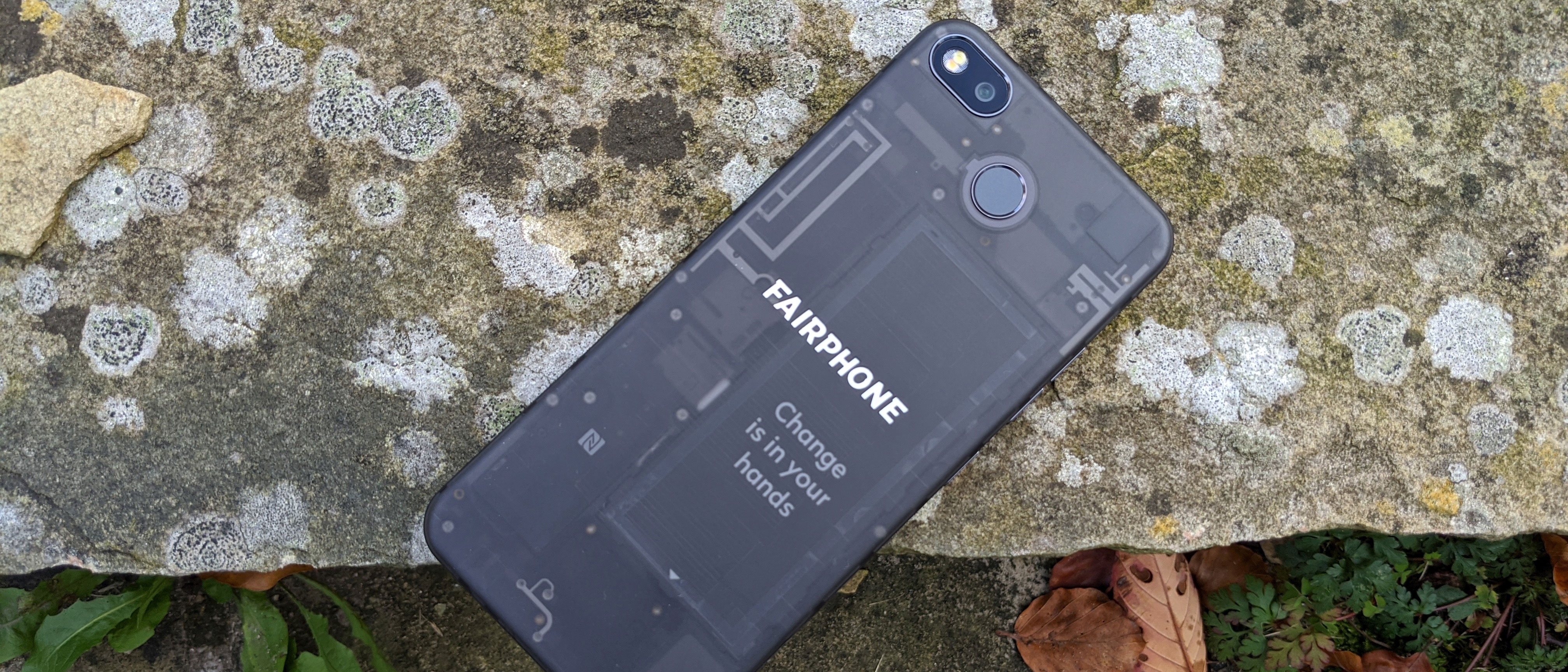TechRadar Verdict
Fairphone deserves a lot of plaudits for what it's trying to do in the areas of sustainability, eco-friendliness, repairability, and protections for workers along the supply chain, and the Fairphone 3 has enough going for it to make it a viable option for your next smartphone.
Pros
- +
Brilliant approach to phones
- +
Rugged and protected
- +
Replaceable battery
Cons
- -
Camera could be better
- -
Performance is budget level
- -
Only on Android 9
Why you can trust TechRadar
Two-minute review
Four years after the Fairphone 2, its successor has arrived. The specs and design have been updated, but the ethos remains the same: to produce the most eco-friendly, ethically-minded smartphone on the market.
With that in mind, it's perhaps unfair to review the Fairphone 3 in the same way as, say, the iPhone 11 or the Google Pixel 4.
This isn't a phone aiming for the best camera quality, or the highest performance benchmarks, or the longest battery life, or the most impressive gimmicks, or even the best value for money – it's a phone trying to give you all the smartphone basics without adding more strain to an already groaning planet.
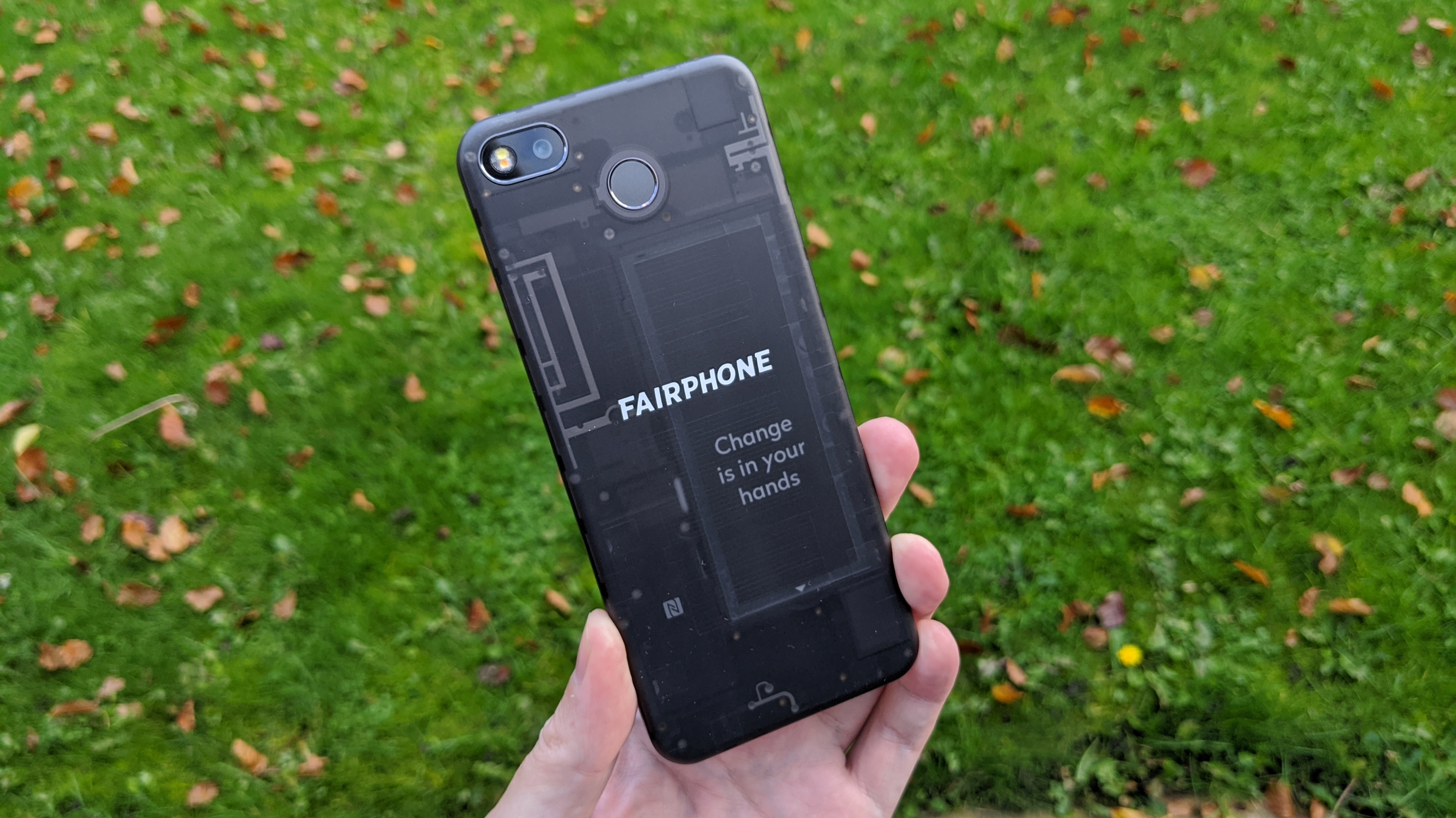
That approach covers everything from making the phone as modular as possible – so upgrades and repairs are easier – to ensuring that workers who mine the metals that go into the handset are well looked after and properly compensated. It's not quite a zero-impact device in terms of the environment, but it's the closest you'll get in 2019.
It's a refreshing change in an industry that's often rushing to produce the most powerful and the shiniest phones, without enough thought about the environmental consequences. If you value sustainability and repairability over camera quality and loading times, then the Fairphone 3 could be for you.
Fairphone 3 release date and price
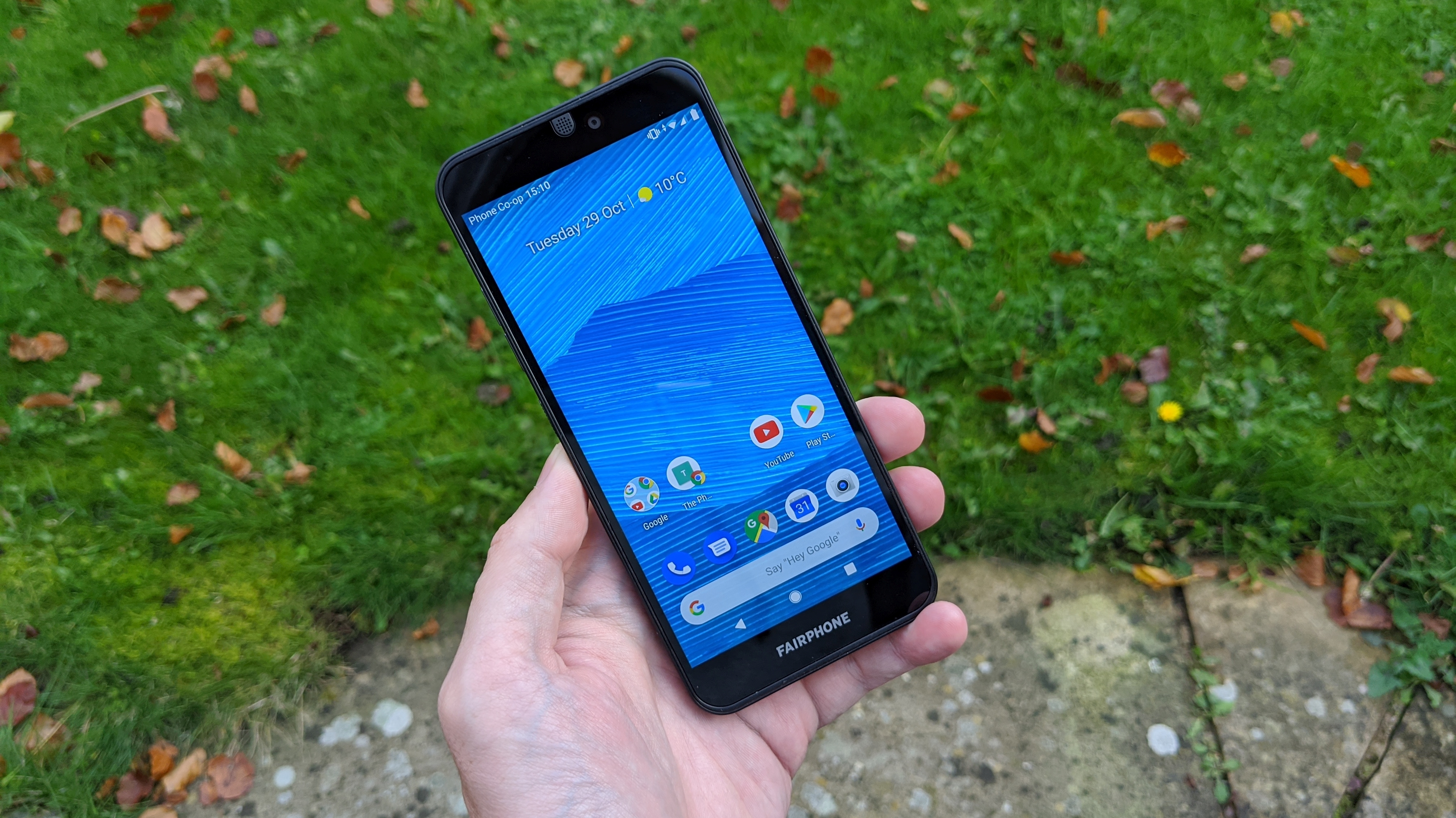
- Released September 3, 2019
- Costs €450 / £420 (about $500 / AU$730)
The Fairphone 3 is out now, and can be yours for an up-front cost of €450 (about $500 / £390 / AU$730) direct from Fairphone itself (the company is based in the Netherlands). It's only officially available in Europe and the UK, though – if you're in the US or Australia and you want one, you'll need to look into international importing options.
There are three retailers stocking the phone in the UK: Vodafone, Sky and The Phone Coop. Opt for Sky and you can pay anywhere from £22 per month (for 2GB of data) to £40 per month (for 25GB of data). Those prices tie you into a two-year contract.
Over at The Phone Coop you can choose from a variety of plans too, as well as paying £420 up front and keeping your existing SIM. Plans range from £25 per month (for 1GB of data) to £55 a month (for 60GB of data), and again those plans are over two years.
While those prices are slightly more than you would expect to pay for a phone with the specs that the Fairphone 3 has, you're paying the extra for the extra commitment to putting people and the planet first.
Design
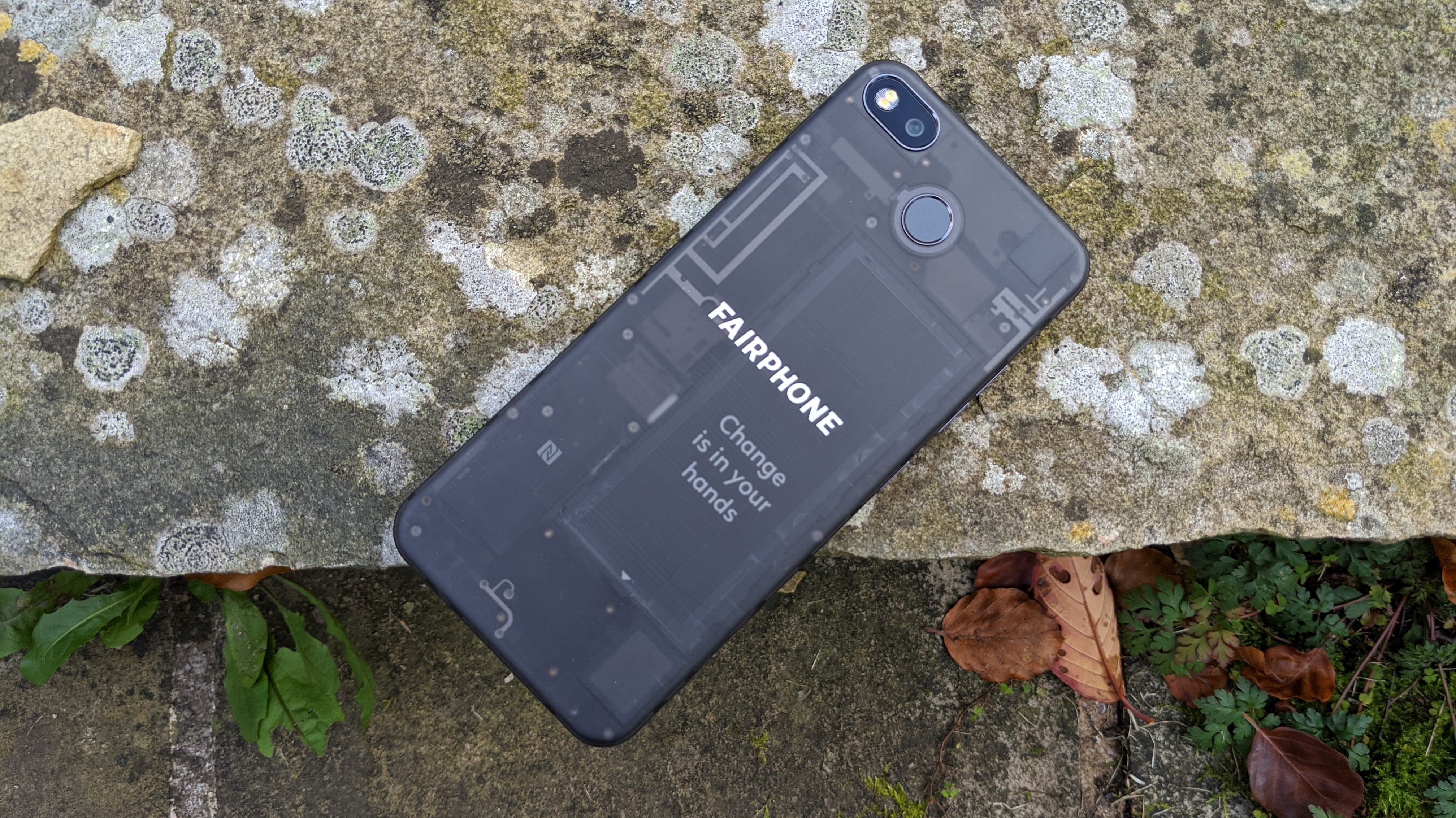
- Semi-translucent back cover
- Perfect iFixit score
- You can swap out the battery
With its chunky bezels, general chunkiness, and 9.89mm thickness, this isn't the best-looking or most svelte phone you're going to see in 2019 – its beauty definitely lies beneath the surface, in terms of its approach to eco-friendliness and fairness in the phone's production.
We are glad to see USB-C added to the mix here, which means you can use any charger or cable you've got lying around to power up the Fairphone 3. These accessories aren't included in the box, again with an eye on the environment (in this case, cutting down on unnecessary e-waste).
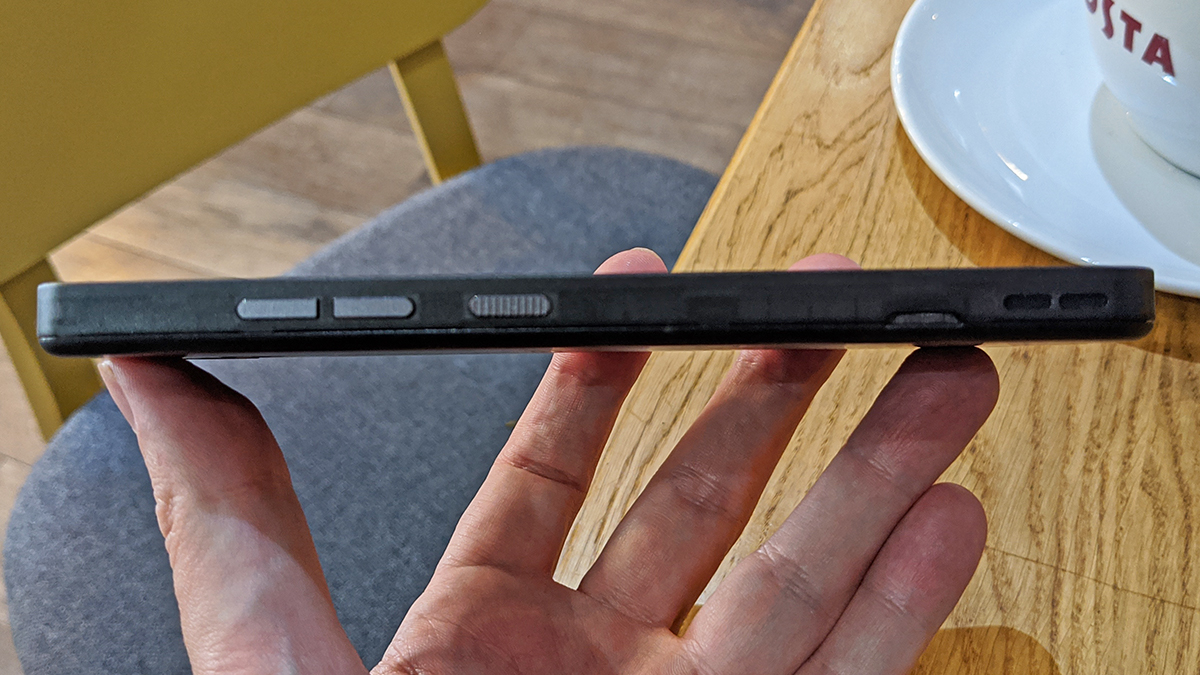
The power and volume buttons are both on the left of the phone as you look at it. There's a fingerprint reader on the rear, as well as the single-lens camera and flash, which sit up in the top left-hand corner of the back. There's a nice x-ray style design on the back as well, with a semi-translucent casing exposing the insides.
This is a phone designed to be easy to repair, with key components fitted as modules (you even get a little screwdriver in the box). If the camera breaks you can swap it out; same with the speaker and various other bits of circuitry inside the phone.
And get this – you can swap out the battery. It's just like the old days of smartphones, where you could carry around a spare battery just in case the first one didn't last you through the day.
It's possible to flip off the back cover and remove the battery without any tools at all, though you will need a screwdriver for replacing modules like the camera. Fairphone has done such a good job of making its latest handset repairable and modular, in fact, that iFixit has given the handset a perfect 10 out of 10 score.
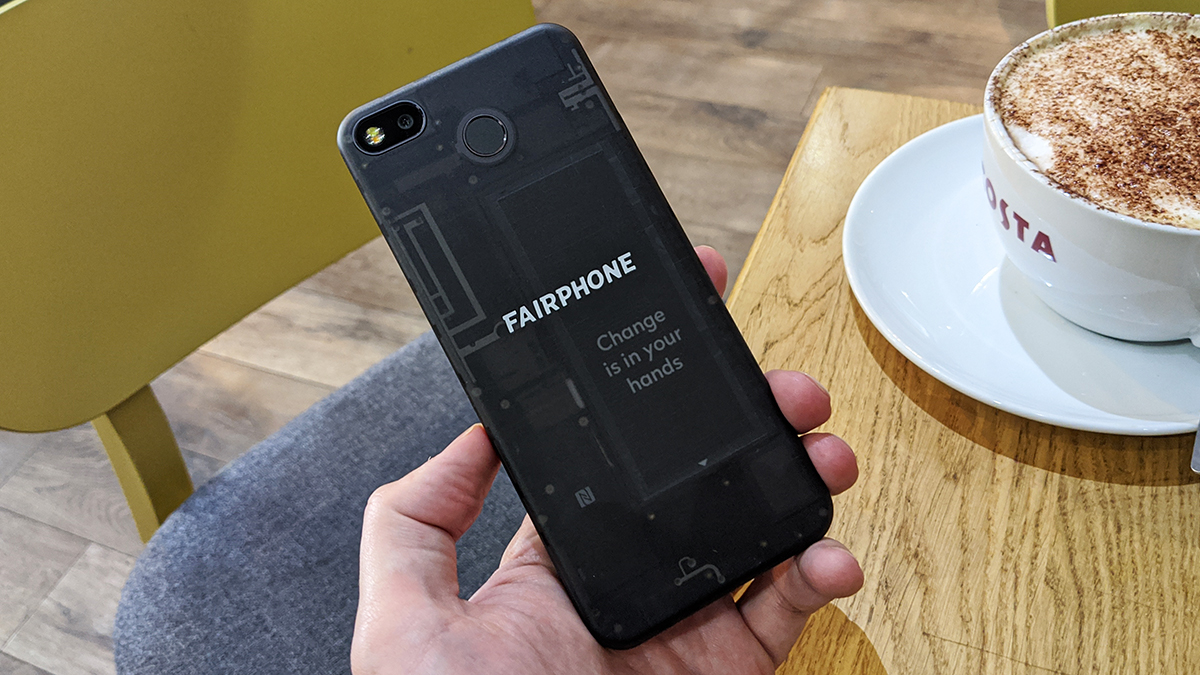
Speaking of the old days of smartphones, the 3.5mm headphone jack is present and correct here too, so no need to throw out those wired headphones just yet. You also get a bumper case included in the box, if you want a little extra protection for drops (and don't mind a little extra bulk as a result). Though note that there's no water resistance.
Design-wise, on the one hand, the Fairphone 3 looks like a five-year-old smartphone; on the other, it's the most easy to repair and upgrade phone around. It's up to you whether you prefer aesthetics or ethics, so it's hard to give an overall verdict on the appearance of the Fairphone 3 – it's not a stunner, but it's not trying to be.
Display
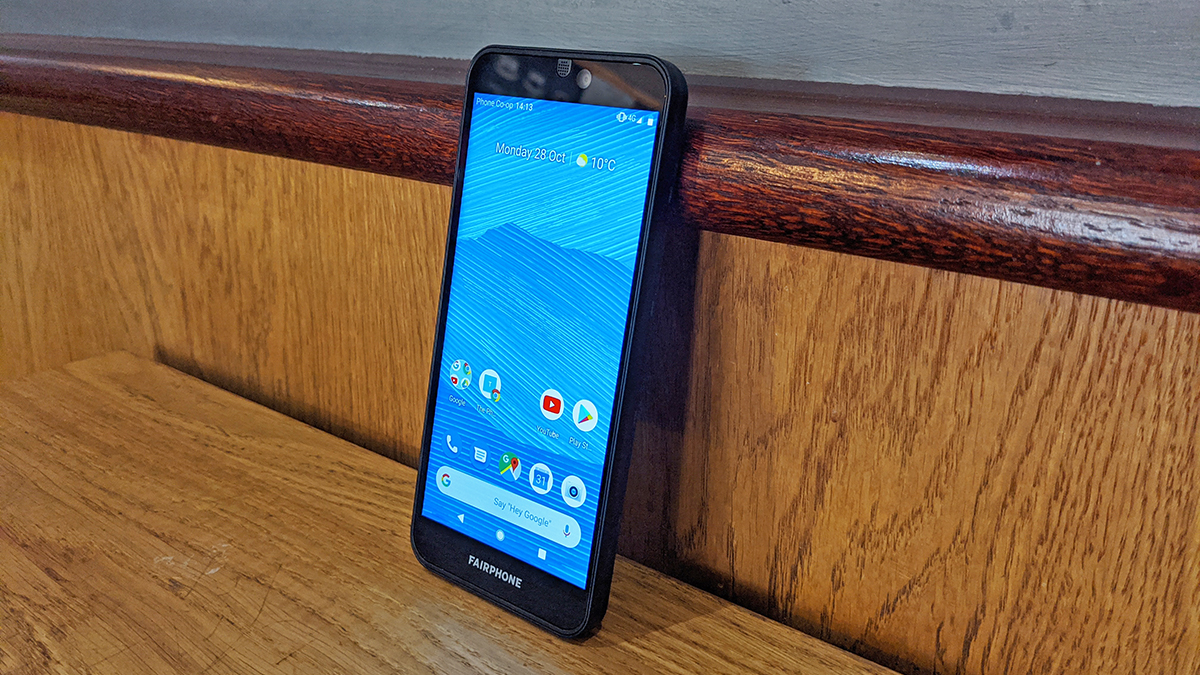
- 5.65-inch LCD display
- Great for movies and video
- Limited to Full HD+ resolution
The Fairphone 3 comes rocking a 5.65-inch, 1,080 x 2,160, 18:9 LCD display. We tested it with web pages, movies, maps and more, and found it nice and sharp and bright – although that smaller size might feel a little odd in the hand if you're more used to the 6-inch plus phones that dominate the market now.
Of course you would expect there to be a difference in quality between this display and the very best OLED panels that the likes of Apple and Samsung attach to their phones. The screen on the Fairphone 3 isn't up to that level, but at the same time it's not quite as far away as you might expect.
We did occasionally find ourselves wanting a bit more room for scrolling around web pages and documents, and you don't get any of the fancy color tweaking options available on some of the higher-end Android phones out there, but the Fairphone 3 display is by no means a disappointment.
Like everything else when it comes to the Fairphone 3, it's a question of weighing up its qualities against the position it takes on the ethics of smartphone production. While the display panel might fall short when viewed against the very best in the business, it can definitely hold its own when put up against panels on other Android phones in a similar sort of price range.
Camera
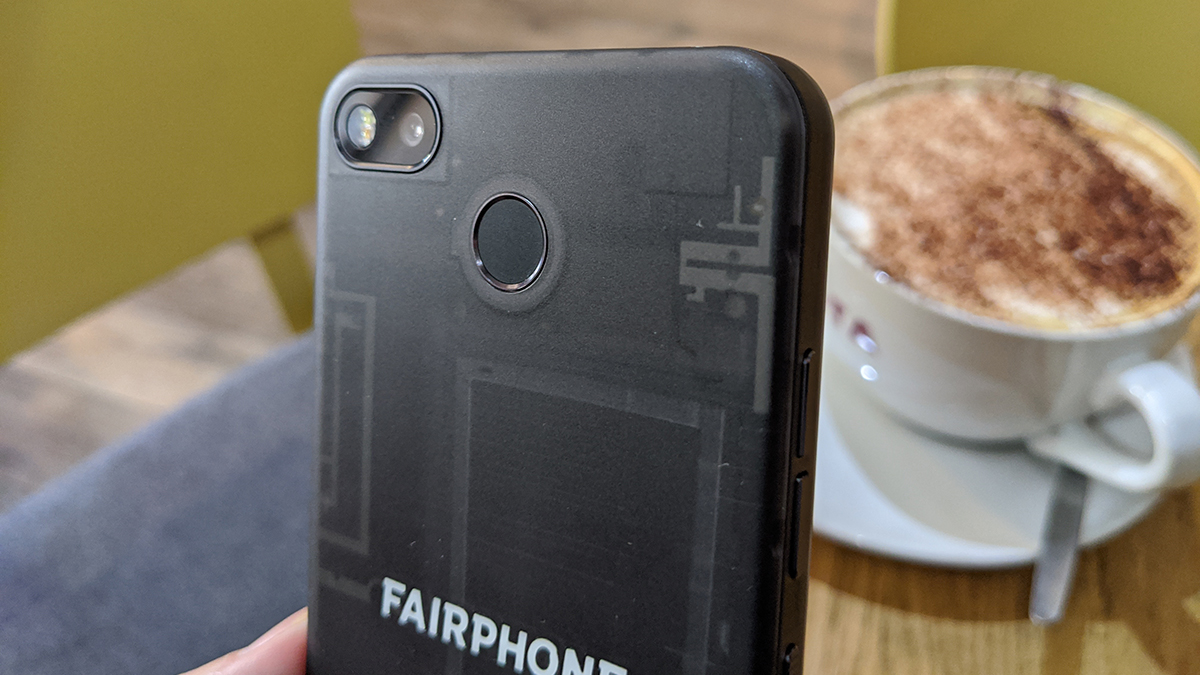
- Single 12MP f/1.8 rear camera
- Single 8MP f/2.0 front camera
- Some pro settings
The camera is perhaps the weakest link on the Fairphone 3, with a single-lens 12 MP f/1.8 rear camera that doesn't do particularly well in low light. It will still get you some decent photos, don't worry about that, but the camera is one area where you can tell you've got a sub-flagship handset in your hands.
We managed to snap some very respectable photos of landscapes, flowers, and people in good light, and to be fair to the Fairphone 3, low light shots are okay too – as long as there is a bit of light available, and your subjects are standing still.
You could definitely make the case that we've been spoilt by the sort of magic that the Google Pixel 3a can pull out of its hat – available at a similar price to the Fairphone 3 – but this phone just doesn't have the lenses or the algorithmic prowess to match.
With only a single lens available to you here, you can't take advantage of any telephoto optical zoom or wide-angle framing, so you're largely left with the basics. There's no night mode either, but you do get a pro mode, with adjustable ISO and white balance settings – not that it seems to make much difference to your shots.
Video recording is respectable, maxing out at a 4K resolution at 30-frames-per-second, and you get time lapse and slow motion modes thrown in as well. As long as you're posting to social media rather than trying to film a short for your local movie festival, you should be fine with the Fairphone 3.
Shutter speeds are good, as long as the light is decent, and there is that flash alongside the single lens of the rear camera – if you find yourself struggling to capture decent images in poor lighting conditions, then the flash might be able to offer a quick fix, even if it's not the ideal solution.
Camera samples








Specs and performance
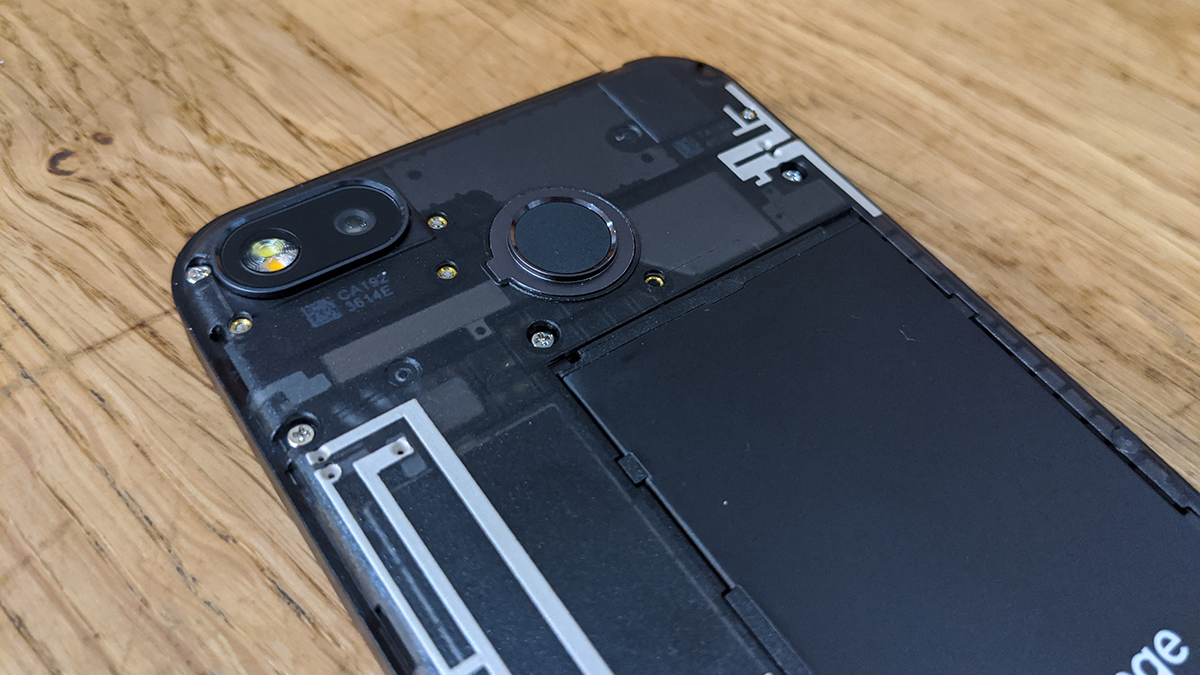
- Snapdragon 632, 4GB of RAM
- 64GB of storage with microSD slot
- Low benchmark scores
You won't be surprised to learn that the Fairphone 3 isn't anywhere near the top of the smartphone pile when it comes to performance. The average multi-core score on Geekbench 5 we got was 1,243, which is in line with the much cheaper Moto G7. This isn't a handset that's going to power through games and demanding tasks.
Under the hood there's a Snapdragon 632 chipset (as previously seen in the Moto G7), and that's paired with 4GB of RAM, which is just about the minimum you can get by with these days. The phone doesn't lag, exactly, but you'll be waiting a few milliseconds more for anything to happen compared with the very top-end phones.
All that said, the Fairphone 3 is able to handle just about everything you can throw at it, including the games we tested – you just might be sat on loading screens for longer. Unless you're doing some demanding video editing or gaming, you won't feel the difference too much.
Despite the low benchmarks we've mentioned, we found the Fairphone 3 perfectly usable for day-to-day tasks, and if you're thinking about this handset in the first place, then you're perhaps not the kind of person wanting blistering performance levels from your phone.
As far as internal storage goes, you get 64GB included, which again is just about as low as you would want to go on a smartphone in 2019. Thankfully there is a microSD card slot included as well, should you want to expand the internal storage – and that's one area where the Fairphone 3 has the edge over the latest Google flagships, like the Google Pixel 4 XL.
Software and apps
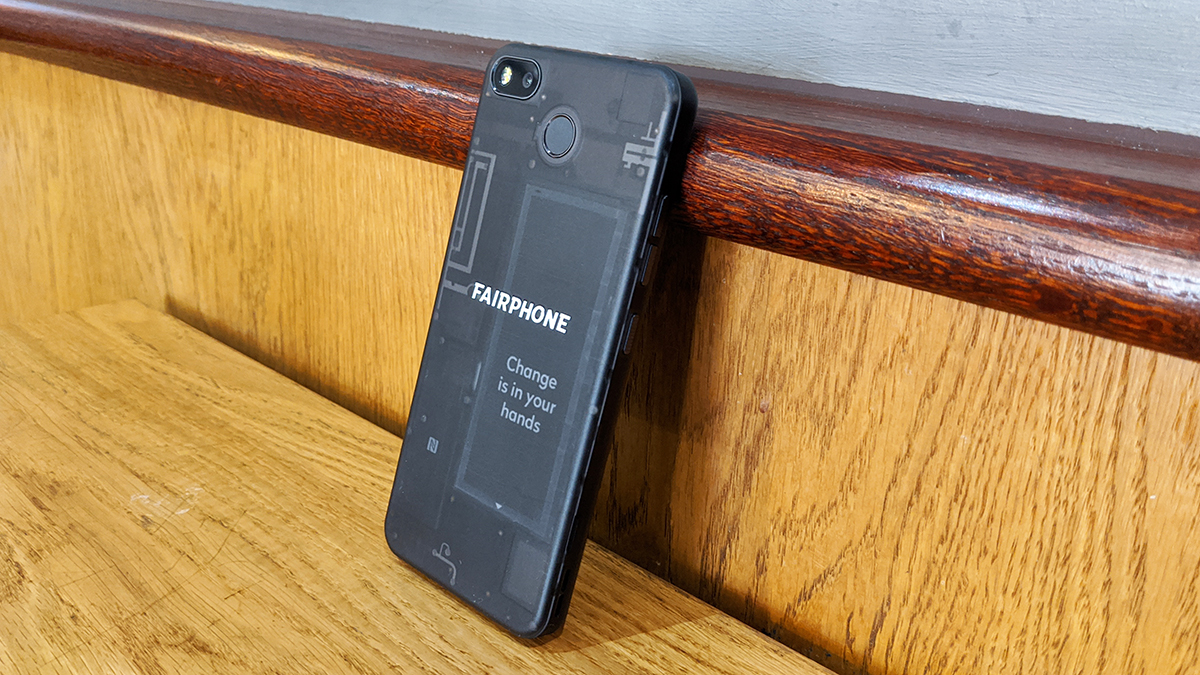
- Fairphone OS on board
- Based on Android 9
- Full Google Play Store access
The Fairphone 3 runs a lightly tweaked version of Android 9 Pie called Fairphone OS, which is close to stock Android and comes with all of Google's apps and services already pre-installed when you boot up the phone. As a result, you're going to need a Google account to make the most of the Fairphone 3.
Unlike the Fairphone 2, the Fairphone 3 doesn't offer the option of Fairphone Open – an operating system without Google strings attached. Fairphone says it's "currently investigating the possibility" of making this available on the Fairphone 3, but for now, Fairphone OS is what you've got.
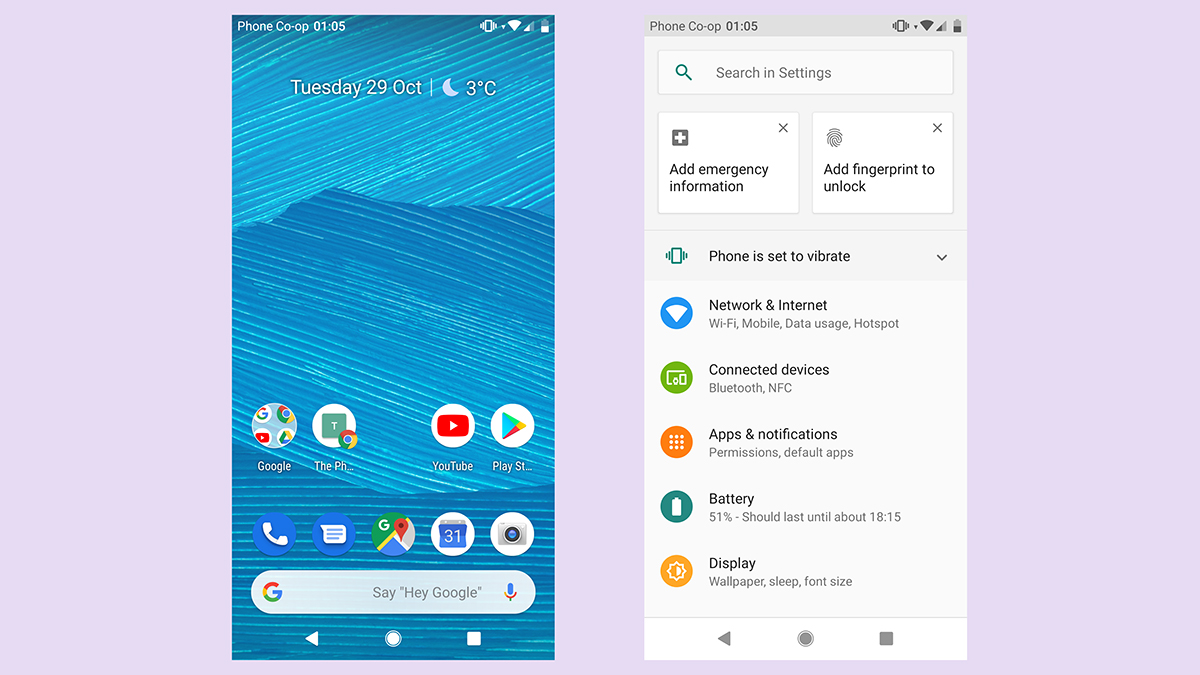
So you get all the Google basics – Gmail, Google Maps, Google Photos and so on – plus what is essentially stock Android underneath. You don't need to worry about bloatware or a mass of pre-installed apps with the Fairphone 3: our review unit had 19 Google apps and the Settings shortcut and that was it.
Google Assistant is here, but you don't get the extras that come with Android 10, like support for a dark mode and gesture navigation. As for future updates, don't hold your breath – the Fairphone 2 launched with Android 6 in 2015 and at the time of writing (October 2019) has made it up to Android 7.1.
Battery life
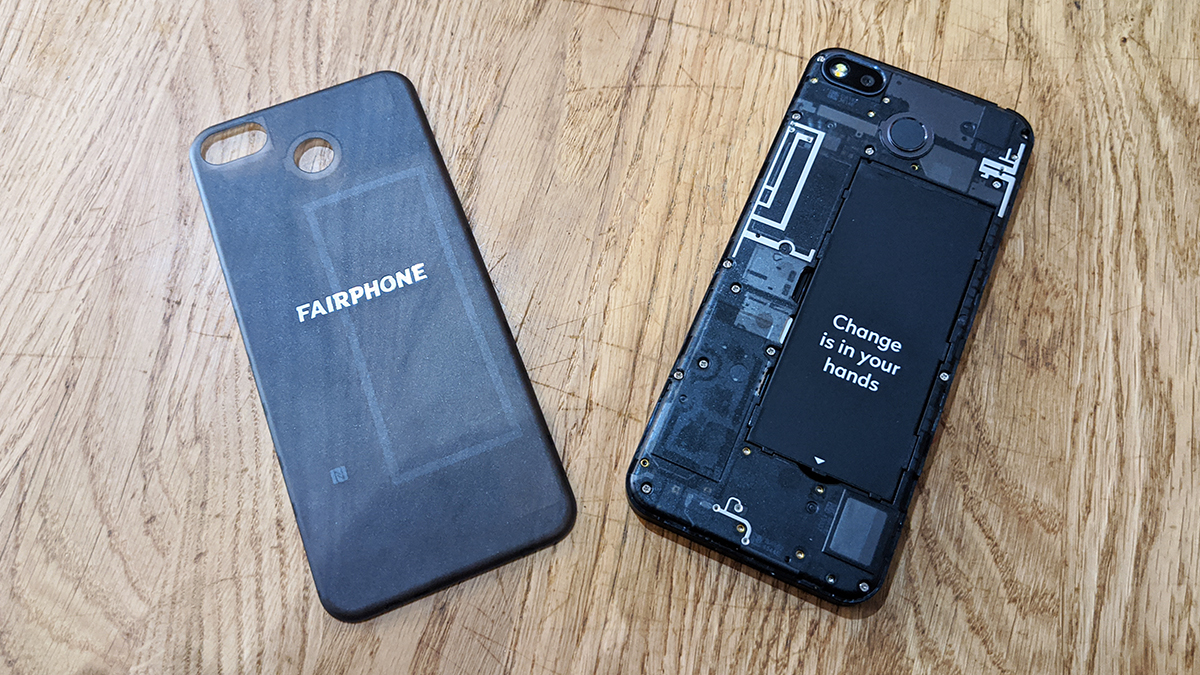
- Easily lasts a day
- Long battery lifespan
- No charger included
One of the benefits of a thicker phone, a lower-res display, and less powerful components, is that you get more battery life between charges, typically. The Fairphone 3 comes packed with a 3,000mAh battery (removable and replaceable, don't forget), and we found it gave us more than enough juice to make it to the end of the day.
In other words, in normal usage, this is a phone that will see you into a second day at a push, rather than have you scrambling for a charger before you head out for the evening. In the TechRadar battery test (a 90-minute video), the battery level dropped from 100% to 77%.
For comparison, the Pixel 4 dropped to 81%, and the Moto G7 dropped to 78%. That puts the Fairphone 3 in a poor light, but in real world testing, day-to-day, we found it was much better – perhaps it's a case of it deals with regular use better than extended video watching (our test does put the screen up to maximum brightness).
You don't get wireless charging with the Fairphone 3, but there is what Fairphone calls an 'eco charge' technology here – where charging is faster up to 85% before slowing down. The idea is to increase the lifespan of the battery overall, again with an eye on reducing e-waste.
The Qualcomm QuickCharge 3 standard is supported, provided you have a compatible charger to use – remember that Fairphone doesn't include one in the box, though you can buy one separately for €19.95 (roughly $22/£17/AU$32) direct from the company.
Buy it if...
You care about sustainability
If you think more needs to be done to protect the planet, the Fairphone 3 is the only phone for you: it's a 5-star superstar in terms of repairability, longevity, and the way it has been put together (from the way minerals are mined to the assembly line working conditions).
You need something rugged
With its chunky size and the plastic case you get in the box, this is a phone that's going to take a few bumps and knocks and just carry on as normal. Even without the case, you're going to have to work hard to do any damage to the front or back.
You want a phone that's going to last
While it didn't do brilliantly in our video test, in actual day-to-day use the Fairphone 3 went for a full day between charges and then some. Remember too that the battery can be swapped out for a spare without any tools – something that's very rare in phones now.
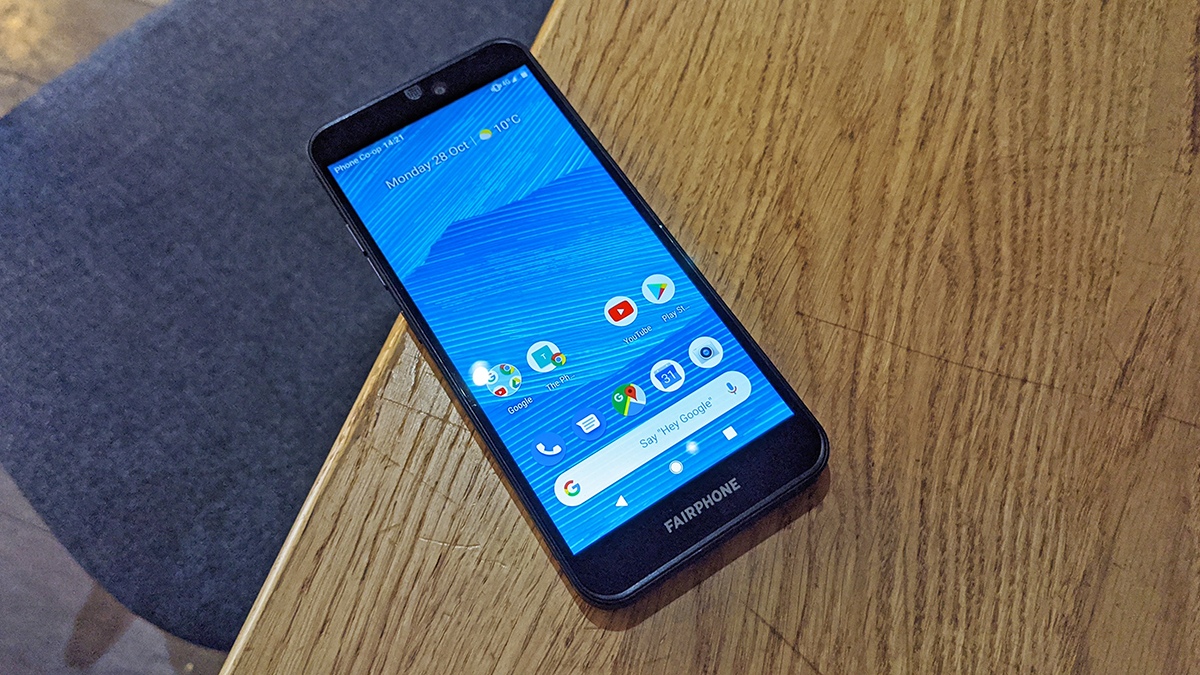
Don't buy it if...
You want the best performance
The Fairphone 3 is not a phone that's going to hold up well under the strain of the most demanding apps and games – it's a handset that will cope with the basics of calls, texts, emails, browsing the internet and... that's about it (which is fine, for a lot of us).
You need top-class photos
The camera on the back of the Fairphone 3 is going to do the job for social media and family memories if there's some light around, but the top-tier handsets of 2019 (as well as some of the mid-range and budget ones) are way ahead of the Fairphone 3 here.
You're not going to keep it
One of the driving forces behind the creation of all the Fairphones is a push to make us hang on to our phones for longer and reduce e-waste – if you're going to replace this after a year or so then it's debatable whether it was worth you buying it in the first place.
First reviewed: October 2019

Dave is a freelance tech journalist who has been writing about gadgets, apps and the web for more than two decades. Based out of Stockport, England, on TechRadar you'll find him covering news, features and reviews, particularly for phones, tablets and wearables. Working to ensure our breaking news coverage is the best in the business over weekends, David also has bylines at Gizmodo, T3, PopSci and a few other places besides, as well as being many years editing the likes of PC Explorer and The Hardware Handbook.
